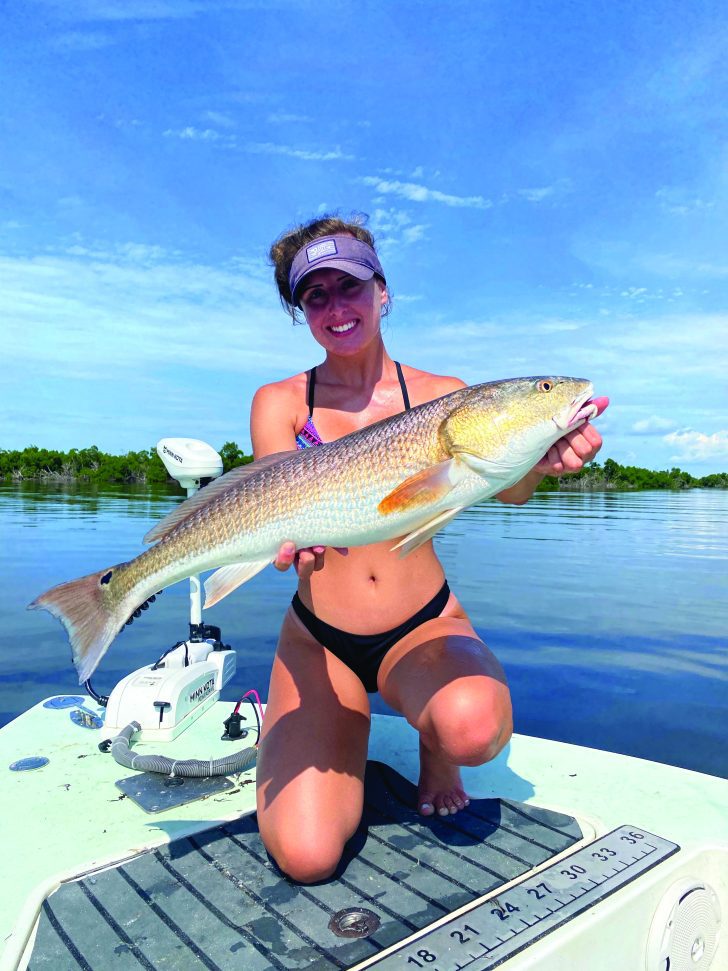By: Caitlyn Gatrell

From the mangrove lines to the shallow water of local islands and their points, and even in the backcountry, schools of baitfish, especially mullet who are on their annual migration run around this time, start becoming more and more abundant. They are easily found and can be caught with a cast net.
When you secure your bait and head to your spots, get ready for a potential gnarly fight. Not only are there sharks around, but snook and redfish become more aggressive, jacks strike hard on bait balls, and trout are around and willing to bite. The fall season also includes a taste of tarpon fishing as you watch them chase the mullet run as it pushes south.
We spend most of our fall trips targeting the mangroves and nearby structure such as docks, drop offs, piers, cuts, oyster beds, points, etc., wherever the current pushes bait through. These ambush spots are great for snook and reds, which are feeding heavily before winter slows them down. Redfish patrol the shallows, tailing on oyster beds and shorelines, and when you hook into one, they’ll run with power. The same goes for snook, often hiding in between mangroves branches and nearby the underwater cuts.
Live bait is a go-to this time of year, but top waters and soft plastics can get explosive strikes on crisp mornings when the water temps are just right. A couple key factors that help us succeed are casting tight against the mangroves, slowly trolling along oyster beds and flats, and free lining baits into the deeper cuts and currents.
Fall fishing isn’t just about what you catch, it’s also about how it feels. The temperatures and atmosphere are cooler and in my opinion quieter, the water is alive with movement, and every strike feels like part of the season’s rhythm. Whether it’s a snook slamming your line under a mangrove, a redfish tailing at dawn, or a jack, or even a tarpon, giving you a run for your money in open water, fall in Southwest Florida is great fishing, and great memories!
